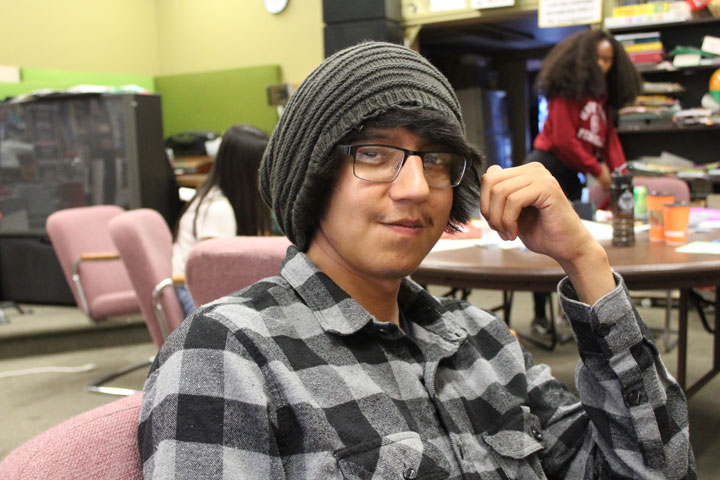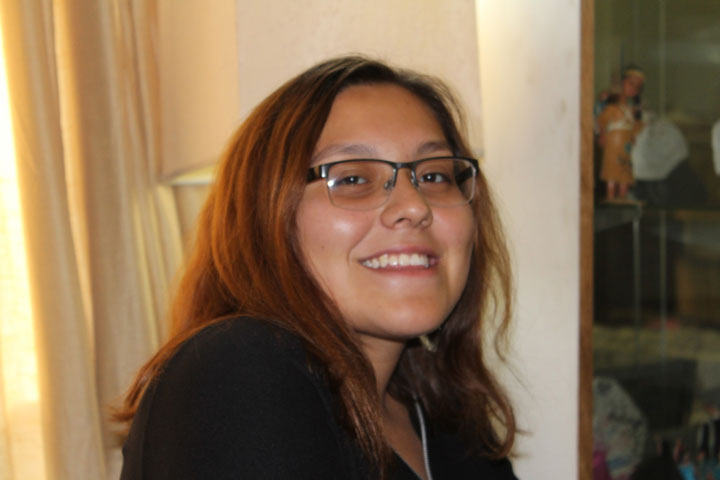Global News is a media partner with Journalists for Human Rights and, as part of that partnership, is proud to provide a platform for updates on JHR programs.

Tyarra Goodman is a student from Sandy Lake First Nation studying at Confederation College in Thunder Bay. She was one of 16 Thunder Bay youth who participated in media training with Journalists for Human Rights’ Indigenous Reporters Program this summer. During the training session, Goodman produced a video exploring her experience of racism in the city.
WATCH: HR trainee and member of Thunder Bay’s Regional Multicultural Youth Council Tyarra Goodman tells her story of overcoming racism in Thunder Bay.
Along with other challenges facing the youth of Thunder Bay — particularly First Nations youth — racism has been a topic of discussion over the past few years.
In her award-winning book Seven Fallen Feathers: Racism, Death and Hard Truths in a Northern City, Tanya Talaga explores the lives and deaths of seven students who lived in Thunder Bay while attending high school, far from the isolated First Nations communities they called home.
The Seven Youth Inquest, a coroner’s inquest into the deaths of those seven Indigenous youth, concluded in 2016, with the Office of the Chief Coroner making 145 recommendations to eight parties as a result of its findings.
In response to one of those recommendations, the federal government recently announced $5.6 million in funding for its Youth Inclusion Program, which will work with vulnerable youth in Thunder Bay, particularly Indigenous youth who are living in the city to pursue their education.
Talaga was selected to give the 2018 CBC Massey Lectures, and the city chosen to launch her series of talks on Indigenous youth suicide? Thunder Bay.
While this discussion has brought much-needed attention to the realities facing Indigenous youth in Thunder Bay, there is one very important perspective that is rarely heard – that of the youth themselves.
Thunder Bay’s Regional Multicultural Youth Council (RMYC) is an organization that describes itself as “an inclusive group of students that aim to link youths in small and isolated communities of Northwestern Ontario and engage, mobilize and empower them to make a difference.” Each summer, a diverse group of high school and college students in Thunder Bay are employed by RMYC to work with at-risk youth in the city.
Many of these young leaders themselves hail from small and isolated First Nations communities and are living far from home and family while they pursue their education. They have unique, personal insight into the challenges the council is working to address.
Each summer, members of the RMYC conducts and presents research on issues faced by their peers. While much of the discussion around Indigenous youth here is focused on racism, substance abuse and violence — all issues the RMYC works to address — this summer, the council’s research priority was an issue that is rarely raised in public discourse: homesickness.
To conduct this research, the RMYC was supported in its activities by Carleton University’s Indigenous Youth Futures Partnership. In collaboration with Carleton University, JHR conducted digital storytelling workshops with the RMYC, training the council in video production skills including research, interviewing, visual storytelling, audio recording and video editing.
The training was held at RMYC’s space — formerly home to a restaurant — in the Victoriaville neighbourhood of Thunder Bay. The old dining booths are still there, often occupied by small groups of students huddled in conversation or working at their laptops. At one end of the old bar, a coffee machine and a seemingly endless supply of donated Timbits, muffins and bagels greet visitors, while the rest of the counter is piled high with books and paperwork, serving the dual purposes of welcome desk and office space for Moffat Makuto, executive director of the Multicultural Association of Northwestern Ontario, a regional parent organization of the RMYC.
Every inch of wall space in the long room is covered in old posters, their anti-racism slogans a constant reminder that this work has been going on for many years. Indeed, Makuto has worked to support several generations of youth since the RMYC was established in 1985. And while the space itself may be showing its age, the energy and enthusiasm brought by the RMYC’s young members breathes new life into its mission each year.
Over the course of the week-long training session, these young people held impassioned and creative discussions about their city, the issues they face and the solutions they would like to see. Members of the RMYC brainstormed the best ways to communicate their ideas, methods for gathering information and how to use that information to create change.
In these conversations, several young people shared their experiences of violence and racism as well as the ways in which they have fought and overcome obstacles. They also discussed challenges every young person faces, such as time management.
The RMYC spent the week thinking, talking and writing about their own experiences and ideas. Individually or in small groups, they produced videos covering topics important to them, providing a first-person perspective on the youth experience in Thunder Bay.
John Moonias of Marten Falls First Nation worked with a small group of youth on a short documentary. “We were talking about substance abuse and addiction: nicotine, caffeine, alcohol, drugs.” He appreciated being able to choose his own subject matter. “When it’s made about what I want to do, I enjoy making it, but whenever I’m demanded to do this and that, it’s overwhelming.”
These young people have a lot to say and, when given the opportunity, they say it with purpose and conviction. There is much we still have to learn from listening to them.







Comments